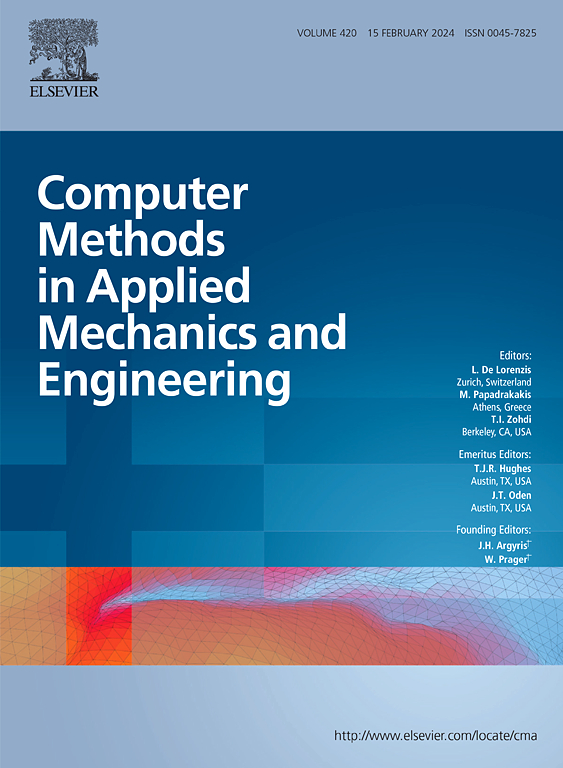Unified Eulerian method for fluid-immersed self- and multi-body solid contact
IF 6.9
1区 工程技术
Q1 ENGINEERING, MULTIDISCIPLINARY
Computer Methods in Applied Mechanics and Engineering
Pub Date : 2025-01-27
DOI:10.1016/j.cma.2025.117745
引用次数: 0
Abstract
We introduce a general simulation approach to model fluid-submerged solid contact of highly deformable objects within the Eulerian Incompressible Reference Map Technique (RMT) for fluid-solid interaction. Our approach allows solid bodies to undergo finite deformations, contact, and, importantly, self-contact while immersed in a fluid satisfying the Navier–Stokes equations. All solid boundaries are modeled using a single levelset field, which is used to produce a key secondary field that identifies when opposing surfaces approach. This secondary field can then be used to create the appropriate contact penalty forces allowing treatment of both multi-body and self-contact under the same algorithm. The method also provides modularity, being directly integrable within the current RMT framework, conserving the desirable properties of the RMT. This technique is demonstrated in multiple cases. We simulate submerged contact of two elastic disks represented with a single levelset, showing that the method approaches the analytical Hertzian prediction for contact between cylinders along their parallel axes. A grid resolution study confirms the convergence of the method. We also model a more intricate example, with several highly deformable hyperelastic objects undergoing simultaneous self- and multi-body contact as they settle within a fluid due to gravity.
求助全文
约1分钟内获得全文
求助全文
来源期刊
CiteScore
12.70
自引率
15.30%
发文量
719
审稿时长
44 days
期刊介绍:
Computer Methods in Applied Mechanics and Engineering stands as a cornerstone in the realm of computational science and engineering. With a history spanning over five decades, the journal has been a key platform for disseminating papers on advanced mathematical modeling and numerical solutions. Interdisciplinary in nature, these contributions encompass mechanics, mathematics, computer science, and various scientific disciplines. The journal welcomes a broad range of computational methods addressing the simulation, analysis, and design of complex physical problems, making it a vital resource for researchers in the field.

 求助内容:
求助内容: 应助结果提醒方式:
应助结果提醒方式:


